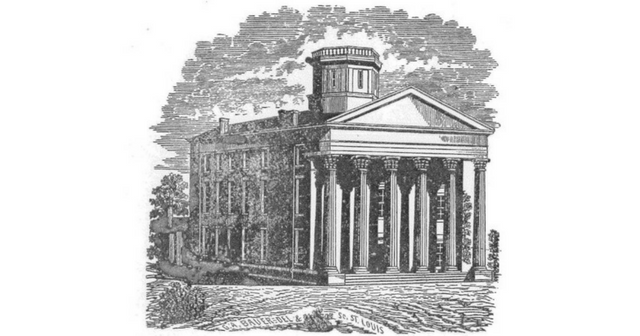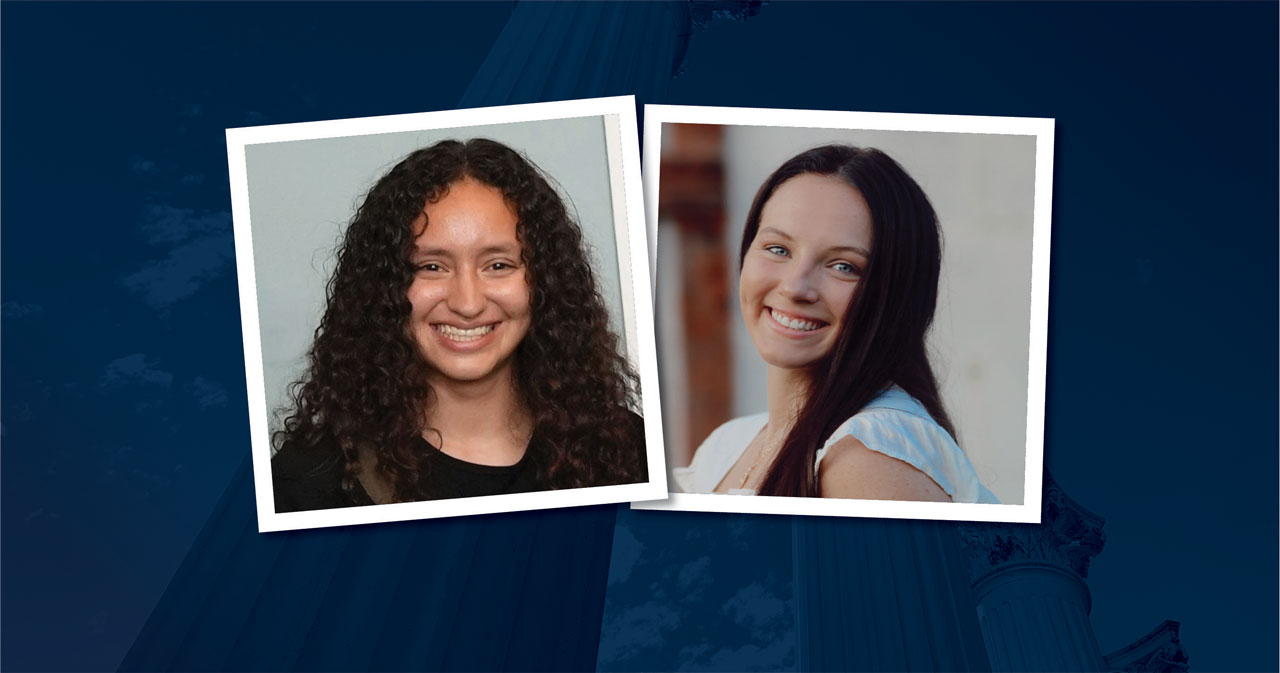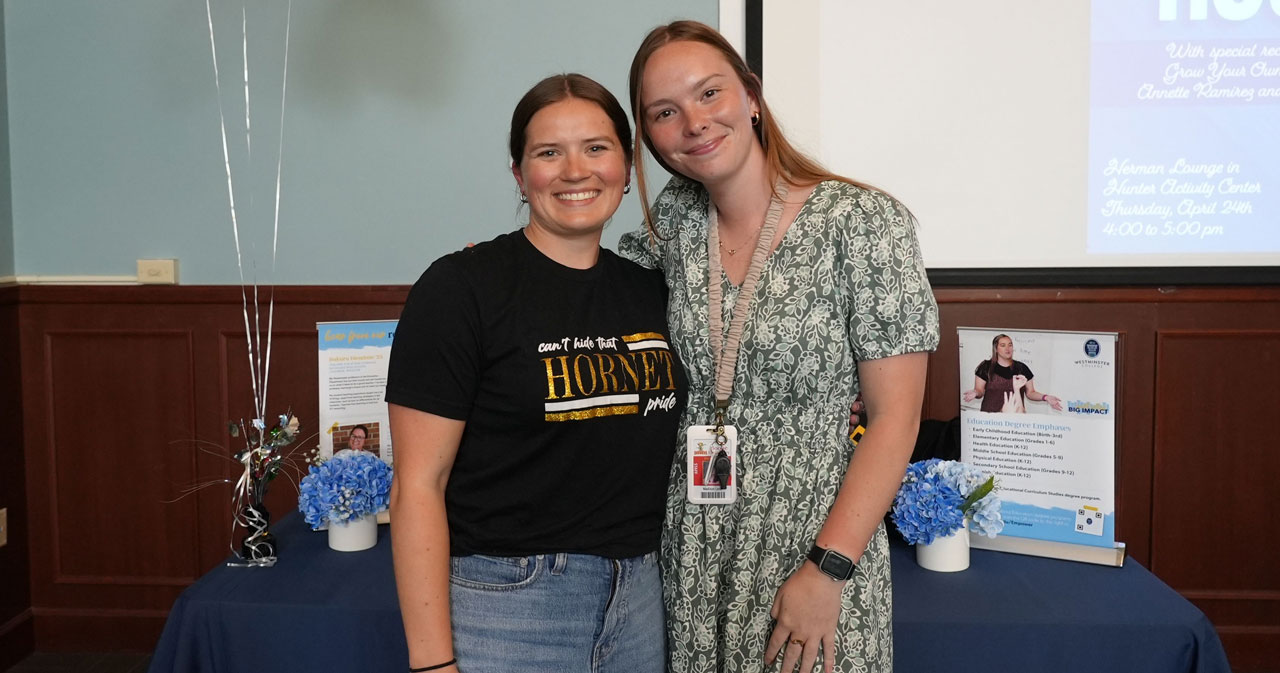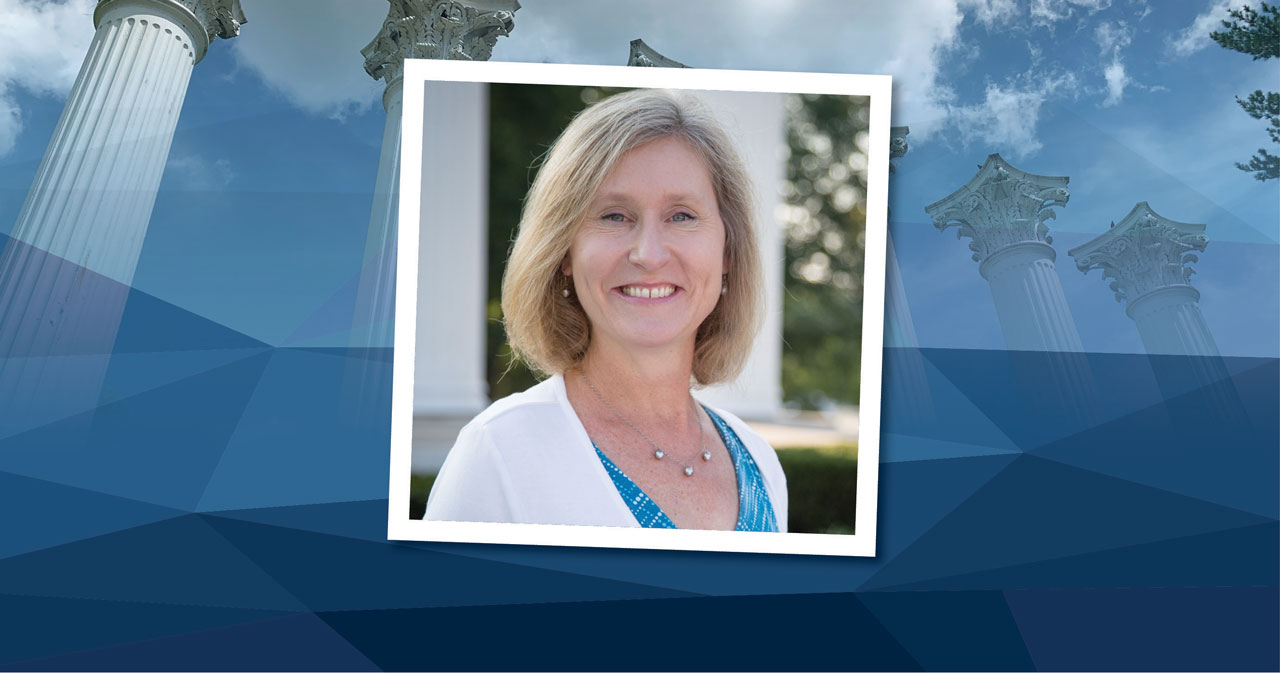Sketch of the first Westminster Hall which was built in 1854 and destroyed by fire in 1909
Following the adoption of the short-lived Fulton College, which had been established in 1851, the Presbyterian Synod of Missouri was ready to open the newly named Westminster College (a much more appropriate name, it was decided, for a Presbyterian-affiliated college) in the fall of 1854 with 114 students. Only four of the men were from out of state with another 46 from Fulton, 33 from rural parts of Callaway County, and the other 31 from other parts of Missouri.
This first student body was told upfront what the cost of attending Westminster would be. Tuition was $15 per session for each of the two 20-week sessions in the term, along with a 75-cent charge for contingency fees (they thought of everything). Books and stationery cost another $5 a year. The students were also told they could find lodging within a reasonable distance from the College by boarding with local Fultonians at a cost of $1.50 to $3.00 per week. This fee included “washing, fires, and lights.”
Scholarships were offered which allowed the purchasers and any of their sons to attend Westminster for up to 20 years for a one-time cost of $150. These scholarships were limited to 1,200 recipients, and if the donor had no son, they could nominate another young man to use the scholarship. This plan was designed with the objective of building an endowment.
To lure students to the 1200-person town of Fulton, the College described it as “blessed with religious, moral, and cultivated society so their parents may be assured they will be exempt from many ruinous temptations and will be surrounded by many sacred influences.”
The convenient location of Fulton was also praised. Students could come within 14 miles of the College on a Missouri River steamboat to St. Auberts Landing and then take the daily hack 14-miles into Fulton on a very precarious road. Another option was to travel the 112-miles from St. Louis by stagecoach, a 24-hour journey on a dirt road that was also susceptible to the perils of weather. The College pointed out that once the railroad came through, accessibility would be greatly improved.
That first year the instructional staff was comprised of four men: Professor William Van Doren, Rev. Samuel S. Laws, Professor Thomas D. Baird, and a tutor who would be the first graduate of Westminster—James Green Smith.
Born in 1830 in Fulton, Smith came to Westminster with two years of college already under his belt. He had attended William Jewell from 1850-1853. Growing up he had attended the Richland Baptist Church where his parents worshiped until they left that church to help start one in town.
Sally McCredie, mother of Isobel, the young woman who would become Smith’s bride, had established the United or Missionary Baptist Church out of her home, and James, along with his parents, Elkanah and Sarah, became three of the original 14-members. 
James and the rest of Westminster’s first group of students had the good fortune by February, 1854 to move classes out of the two-story framed building known as “College House,” which had been erected for Fulton College in 1851, and move into the new Westminster Hall (which was destroyed by fire in 1909, leaving behind only the historic Columns). The three-story brick building with Corinthian Columns was built at a cost of more than $15,000. The Colonnade in front was 60 feet long, the building was 108 feet wide, and the structure sat on 20 acres. Each of the 13 rooms in the building had its own fireplace, and a small chapel was located on the second floor. On top of the building was a closed-in area to hold the College bell that was described as a “round cheese box affair.”
Then in June, 1855 Westminster held its first commencement with Smith, at the age of 25, as the first and only graduate that year. Historical accounts describe Smith as “an excellent scholar and gifted young man.” Held at the Presbyterian Church, commencement exercises were composed of orations by four members of the junior class and a brief address by Professor Samuel S. Laws, who conferred the degree upon Smith. As the only graduate, Smith also had the opportunity to speak, and he delivered an oration entitled “The Mission of Truth.”
Since Westminster was founded as a church college with its main mission to train ministers and Christian leaders, the College was pleased when it was announced that its first alumnus would be a minister. The early Fisher history of Westminster says: “That the first graduate chose to preach the Gospel may be regarded as an earnest of what God had in store for an Institution planted for his glory—an earnest of what that College, as we trust, will be to the latest generation, a fountain of genuine Christian education and a School of the Prophets.” However, the Synod and friends of the College would have been even more pleased if Smith had become a Presbyterian minister, in keeping with the College’s affiliation, instead of preaching the Gospel from a Baptist pulpit.

James G. Smith also received the first master’s degree from Westminster. The faculty decided to award a master of arts postgraduate degree in the spring of 1858 to a three-year alumnus “of good moral character” and devoted to professional endeavors.
The next year in April 1858, the Missionary Baptist Church which Smith helped establish ordained him as a minister, and by the end of that year, he was selected as the fourth minister to lead that church. He served as pastor from September 1859-August 1860 and then again from June 1861-February 1862. He became ill and resigned as minister to have the opportunity to rest and regain his health.
Unfortunately, that was not to be the case. On June 30, 1863, James G. Smith passed away. It was said his congregation was only comforted by knowing he had received “his eternal gain.” It was reported he was buried near the College, but actually, his tombstone is found some distance away. Rather than being buried in the cemetery of the church his family established, Smith is buried in the Richland Baptist Church cemetery, his original home church as a boy.
The second year of commencement exercises at Westminster the number of Westminster graduates would triple—three young men received diplomas. But the Blue Jay Nation should never forget the solitary achievement of James G. Smith, who first walked the path of achievement that countless other Westminster graduates would take in the College’s 166-year history.
This is the editorial account for Westminster College news team. Please feel free to get in touch if you have any questions or comments.







You must be logged in to post a comment.